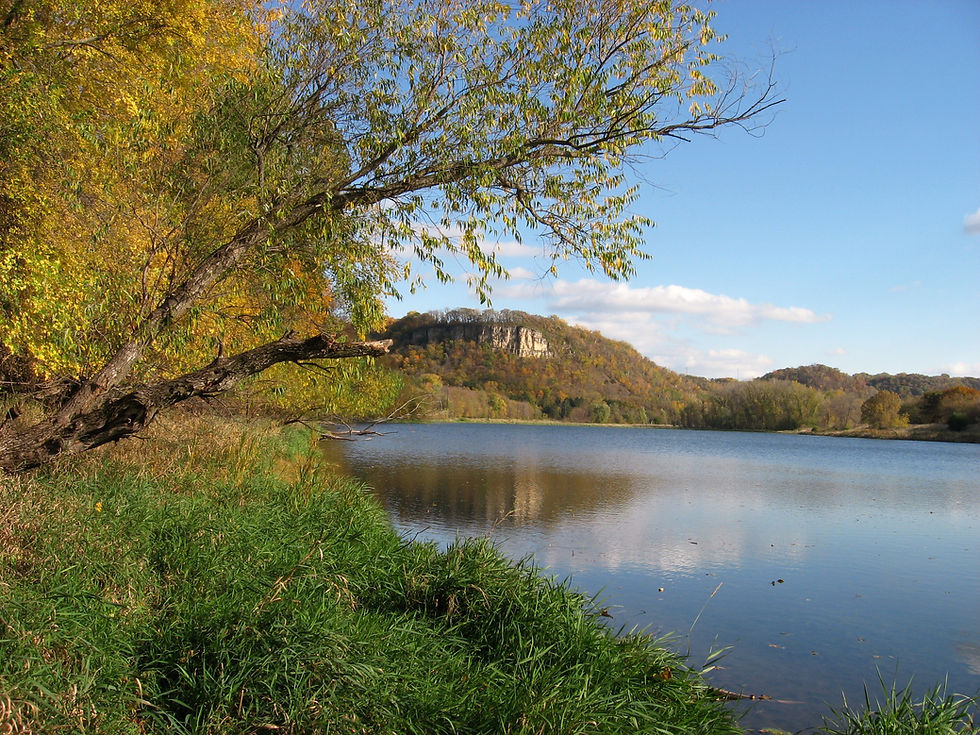Wacouta Prairie
- wacoutanaturenotes
- Oct 26, 2024
- 3 min read

Rainbow over Wacouta Prairie
This post will feature the newly restored "Wacouta Prairie" made possible by the generosity of Scott and Anne Jones. They have placed a permanent conservation easement on their property with help from the Minnesota Land Trust.
This gift has provided the opportunity to protect over 100 acres in the heart of Wacouta Township and at the same time enhanced the quality of life for residents throughout the area who enjoy our natural environment.

Farm Fields Before Planting
In the fall of 2019, the final crop of soybeans was harvested which opened up the fields to the planting of 50 species of native prairie forbs and 12 species of native grasses.

Planting
Planting was scheduled for early November of 2019. A few days before planting was to take place, we were blessed with a significant snowfall. Despite the wet heavy snow, the decision was made to proceed with planting as planned.
According to Haley Golz, Minnesota Land Trust Restoration Manager, the germination rate in the spring of 2020 was surprisingly successful. By sowing the seeds in the snow, seeds were protected from future wind events and hungry birds. All is well, that ends well.

Wild Lupine Lupinus perennis
One of the first prairie plants to bloom in the spring was the blue flowers of the wild lupine. These flowers appeared as a terminal cluster on an upright stem.
At one time, lupines were thought to deplete (wolf) the minerals from the soil. The genus name was derived from the latin name lupis "wolf." In reality, these plants are members of the pea family and help to build soil fertility by fixing atmospheric nitrogen into a useful form.

Spiderwort Tradescantia virginiana
As the parade of colorful flowers continues throughout the summer and autumn, the next plant to bloom is spiderwort. These blue-violet flowers have very pronounced yellow stamens.
This prairie forb was named because of the angular leaf arrangement which appears like a squatting spider. The blooms only appear in the morning and petals wilt and turn to mush by afternoon.

Prairie Coneflowers Ratibida pinnata
By mid-summer, the yellow prairie coneflowers make their presence known. These slender hairy-stemmed plants have flowers with drooping yellow rays. If you crush the central dark disk of this plant, it will emit an anise odor.

Butterfly Weed Asclepias tuberosa
One of the brightest and most colorful plants in the prairie is butterflyweed. It serves as a successful attractant for several species of butterflies. Unlike other milkweeds, this plant does not have a milky sap.
The tough root was chewed by Native Americans to treat pleurisy and other lung ailments. Because of this, the plant is sometimes referred to as Pleurisy Root.

Partridge Pea Cassia fasciculata
This plant is sometimes known as "Sensitive Pea" as the leaves fold when disturbed or under stress in dry conditions. When in bloom, Partridge Pea attracts many pollinators, especially bees. In the summer of 2023, I could hear the hum of the bees in this plant at a distance of 30 feet as I walked on the trail.

Change of Seasons
Even though the brilliant colors of the prairie have faded with the change of seasons, I still encourage folks to get out and take in all the subtle beauty this gift reveals for those who slow down and look.

Aurora Borealis
I would like to close out this post with a photo taken by our daughter Karla in the evening of October 10th overlooking the river at the Head of Lake Pepin. Because of the weeks of dry weather and clear skies, the Aurora Borealis has been spectacular on several occasions.




Comments